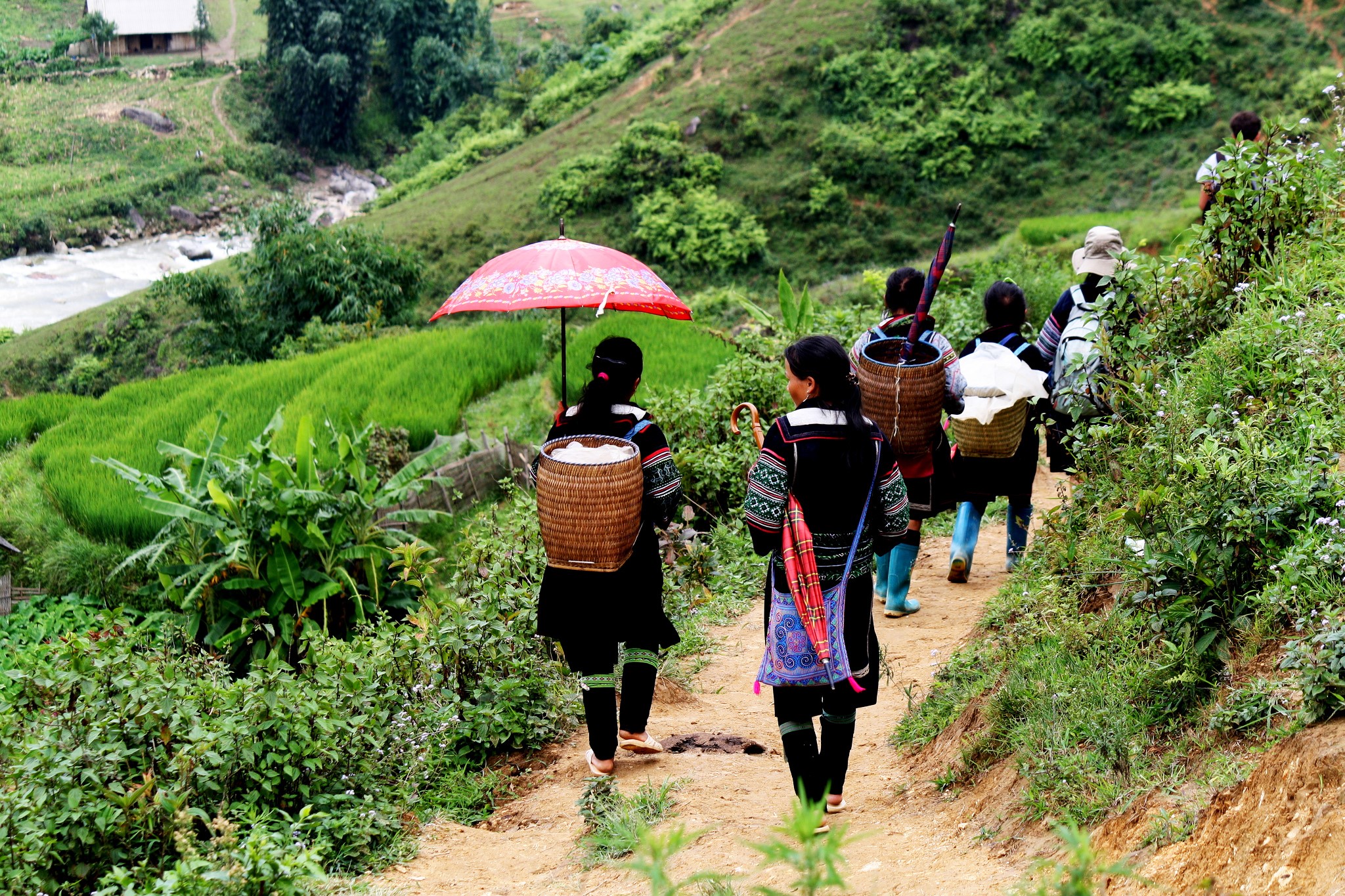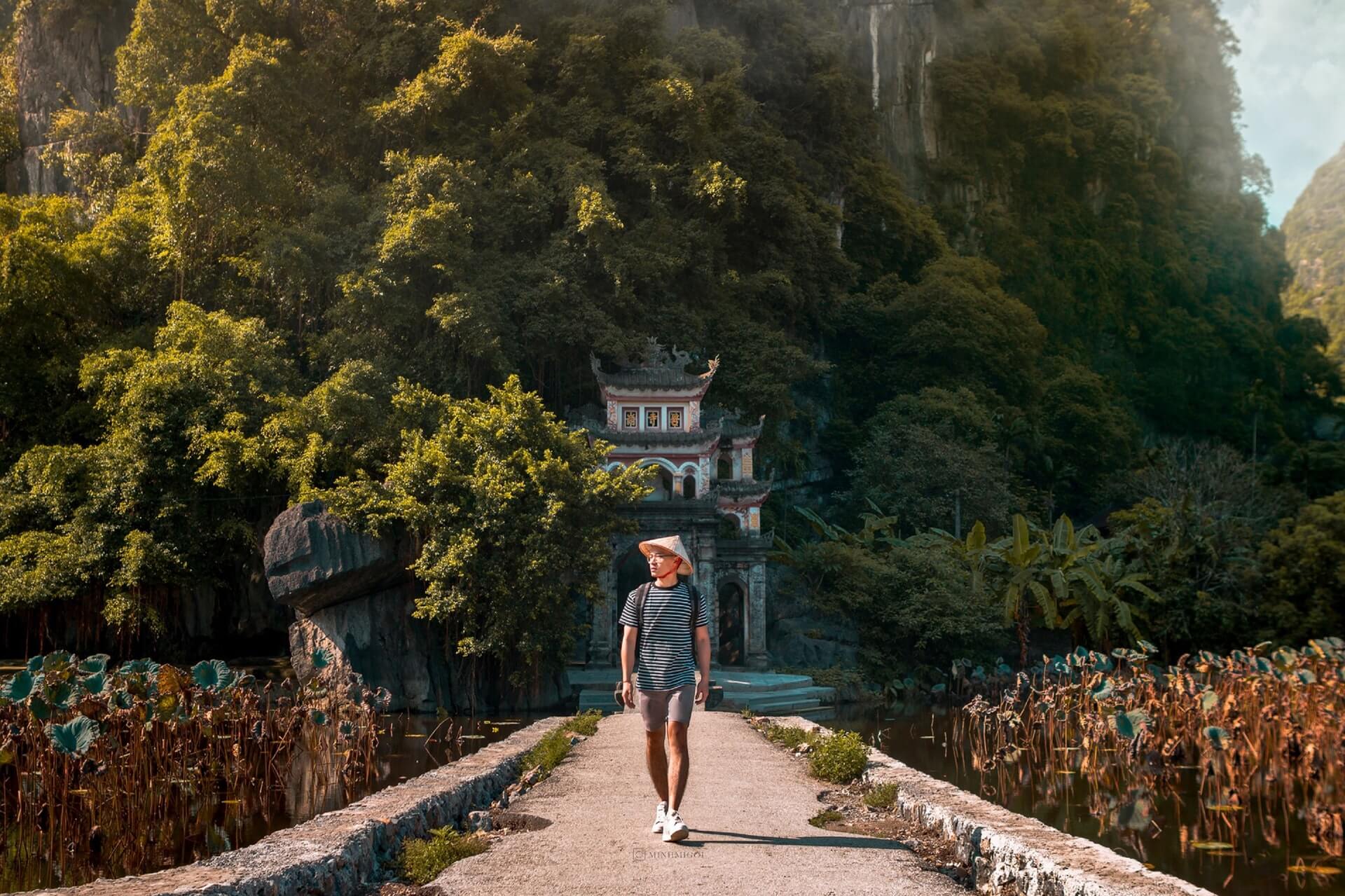Vietnam Backpacking Trip, An Adventurers Guide
Vietnam backpacking trip: Imagine cruising through rice paddies on a motorbike, haggling for vibrant silks in bustling markets, and savoring the explosion of flavors in a Hanoi street food stall. This isn’t just a trip; it’s an immersion into a land of ancient temples, stunning beaches, and a culture as rich and diverse as its landscapes. This guide will equip you with everything you need to plan your own unforgettable Vietnamese adventure.
From meticulous planning to navigating the vibrant streets, we’ll cover visa requirements, budget-friendly travel hacks, optimal travel times, transportation options, accommodation choices, cultural insights, and essential safety tips. We’ll also share sample itineraries and highlight must-see destinations, ensuring you maximize your time in this captivating country.
Planning Your Vietnam Backpacking Trip
Embarking on a backpacking adventure in Vietnam requires careful planning to ensure a smooth and enjoyable trip. This involves securing necessary documentation, protecting your health, and establishing a realistic budget.
Visa Requirements
Vietnam’s visa requirements vary depending on your nationality. Check the Vietnamese embassy or consulate website for your country to determine the specific visa type and application process needed. Many nationalities can obtain a visa on arrival at major airports, while others require a visa in advance. Allow ample time for processing, especially if applying for a visa beforehand.
Travel Insurance
Comprehensive travel insurance is crucial for any backpacking trip, especially in a country like Vietnam. It should cover medical emergencies, evacuation, lost belongings, and trip cancellations. Ensure your policy adequately covers activities you plan to undertake, such as motorbike riding.
Recommended Vaccination Schedule
Consult your doctor or a travel clinic at least six to eight weeks before your trip to discuss necessary vaccinations and recommended preventative measures. Common vaccinations may include Hepatitis A and B, Typhoid, and Rabies, depending on your itinerary and planned activities. They can also advise on malaria prophylaxis if relevant to your travel plans.
Packing List for Vietnam Backpacking
- Lightweight, quick-drying clothing (shorts, t-shirts, long-sleeved shirts for sun protection)
- Rain jacket or poncho
- Comfortable walking shoes and sandals
- Insect repellent (high DEET concentration recommended)
- Sunscreen (high SPF)
- Hat and sunglasses
- First-aid kit (including anti-diarrheal medication and pain relievers)
- Universal adapter
- Small backpack (daypack)
- Dry bag (for protecting electronics and valuables)
- Copies of important documents (passport, visa, travel insurance)
- Phrasebook or translation app
Budgeting for Your Trip
Budgeting for a Vietnam backpacking trip is flexible and depends on your travel style. A budget-conscious traveler might spend $30-$50 per day, covering accommodation in hostels, eating street food, and utilizing affordable transportation. Mid-range travelers might spend $50-$100 per day, opting for more comfortable accommodations and a mix of street food and restaurants. Luxury travelers could easily spend upwards of $100 per day.
Factor in costs for flights, visas, activities, and souvenirs.
Best Time to Visit Vietnam for Backpacking
Vietnam’s diverse geography means different regions experience varying weather patterns throughout the year. Planning your trip around the optimal time for your chosen destinations is crucial.
Optimal Travel Times by Region
Northern Vietnam (Hanoi, Ha Long Bay, Sapa): The best time to visit is during spring (March-May) and autumn (September-November) for pleasant weather and fewer crowds.Central Vietnam (Hoi An, Hue, Da Nang): The dry season (February-August) offers ideal conditions for exploring beaches and ancient towns.Southern Vietnam (Ho Chi Minh City, Mekong Delta, Phu Quoc): The dry season (November-April) is generally the most pleasant, though it’s also the peak tourist season.
Peak Season vs. Shoulder Seasons
Peak season (generally December-February and June-August) offers the best weather in many regions but comes with higher prices and more crowded tourist sites. Shoulder seasons (March-May and September-November) provide a good balance of pleasant weather and fewer crowds, often with lower prices.
Weather’s Influence on Backpacking Activities
Monsoon season (typically May-October in central and southern Vietnam) brings heavy rainfall, which can affect outdoor activities and transportation. Adjust your itinerary accordingly, considering potential delays and alternative indoor activities.
Iconic Destinations & Activities
A two-week backpacking itinerary can offer a taste of Vietnam’s diverse landscapes and cultures.
Sample Two-Week Itinerary, Vietnam backpacking trip
- Hanoi (3 days): Explore the Old Quarter, visit Hoan Kiem Lake, and take a day trip to Ha Long Bay.
- Sapa (2 days): Trek through rice terraces and experience the local hill tribe culture.
- Hue (2 days): Visit the Imperial Citadel and explore the tombs of emperors.
- Hoi An (3 days): Wander through the ancient town, get clothes tailored, and relax on An Bang Beach.
- Ho Chi Minh City (3 days): Explore the bustling city, visit the War Remnants Museum, and experience the vibrant nightlife.
- Mekong Delta (2 days): Take a boat trip through the waterways and experience rural life.
Must-See Destinations
- Northern Vietnam: Ha Long Bay (natural wonder), Sapa (trekking, cultural immersion), Ninh Binh (rice paddies, temples).
- Central Vietnam: Hoi An (ancient town, beaches), Hue (imperial city, tombs), Phong Nha-Ke Bang National Park (caving).
- Southern Vietnam: Ho Chi Minh City (bustling metropolis), Mekong Delta (river cruise, rural life), Phu Quoc Island (beaches, diving).
Transportation in Vietnam for Backpackers
Vietnam offers a variety of transportation options, each with its own advantages and disadvantages.
Transportation Options
- Buses: Affordable and widely available, but journeys can be long and sometimes uncomfortable.
- Trains: More comfortable than buses for longer distances, but can be more expensive.
- Motorbikes: Popular for shorter distances and exploring rural areas, but require a valid driver’s license and awareness of traffic conditions.
- Domestic Flights: Convenient for longer distances, but can be more expensive than other options.
Navigating Public Transportation

Be prepared for bustling streets and crowded vehicles. Negotiate fares beforehand, especially with motorbike taxis (xe ôm). Use reputable booking platforms for buses and trains. Exercise caution when riding motorbikes, wearing a helmet and following traffic laws.
Sample Transportation Plan
A sample transportation plan for the two-week itinerary might involve a combination of overnight sleeper buses between major cities, local buses for shorter trips, and possibly a domestic flight to save time. Motorbikes can be rented for exploring smaller towns and attractions.
Accommodation Options for Backpackers in Vietnam
Vietnam provides a range of budget-friendly accommodation choices catering to backpackers.
Accommodation Types
- Hostels: Affordable and social, offering dorm rooms and private rooms.
- Guesthouses: Offer a more private and often more comfortable experience than hostels, at a slightly higher price.
- Homestays: Immersive cultural experience, offering a chance to interact with local families.
- Budget Hotels: Offer basic amenities at a reasonable price.
Finding and Booking Accommodation
Online platforms like Booking.com, Agoda, and Hostelworld offer a wide selection of accommodations. Booking in advance, especially during peak season, is recommended. Local travel agents can also assist with booking.
Food & Culture in Vietnam: Vietnam Backpacking Trip
Vietnamese cuisine is renowned for its fresh ingredients, vibrant flavors, and diverse regional specialties.
Culinary Scene
Northern Vietnam is known for its rich broths and noodle soups like Phở. Central Vietnam offers lighter dishes with fresh herbs and seafood. Southern Vietnam features bolder flavors with the use of coconut milk and fish sauce. Street food is abundant and affordable.
Navigating Street Food Markets and Restaurants

Street food markets offer a cheap and delicious way to sample local cuisine. Choose stalls that are busy and appear clean. Be cautious of food that has been sitting out for a long time. Restaurants offer a more sit-down dining experience, with a wider range of dishes.
Cultural Etiquette
Vietnamese culture is respectful and polite. Remove your shoes before entering homes and some temples. Use chopsticks correctly. Avoid loud conversations in public places. Learning a few basic Vietnamese phrases is always appreciated.
Safety & Health Considerations for Backpacking in Vietnam
While generally safe, Vietnam presents some potential safety and health risks for backpackers.
Potential Safety Concerns
Petty theft can occur in crowded areas. Be mindful of your belongings and avoid displaying expensive items. Exercise caution when riding motorbikes and follow traffic laws. Be aware of scams and avoid unsolicited offers.
Health Precautions
Stay hydrated, especially in hot and humid weather. Eat at reputable establishments to avoid food poisoning. Use mosquito repellent to prevent mosquito-borne illnesses. Seek medical attention if you experience any health issues.
Emergency Resources
Emergency numbers: 113 (police), 114 (fire), 115 (ambulance). Most major hospitals in cities have English-speaking staff. Your travel insurance provider should have 24/7 emergency assistance.
Responsible Travel in Vietnam
Sustainable tourism is essential to preserve Vietnam’s natural beauty and cultural heritage.
Minimizing Environmental Impact
Reduce your plastic consumption by using reusable water bottles and bags. Respect natural environments and avoid disturbing wildlife. Support eco-friendly accommodations and tour operators.
Supporting Local Communities
Shop at local markets and support small businesses. Choose locally owned accommodations and tour operators. Learn a few basic Vietnamese phrases to show respect for the local culture. Engage respectfully with local communities and avoid actions that could be considered disrespectful.
Post-Trip Reflections: A Vietnam Backpacking Story
My Vietnam backpacking trip was a whirlwind of sensory experiences. From the bustling streets of Hanoi to the serene beauty of Ha Long Bay, each day brought a new adventure. The vibrant colors of Hoi An’s ancient town captivated me, while the Mekong Delta’s tranquil waterways offered a peaceful escape. The challenges, like navigating crowded streets on a motorbike or overcoming language barriers, only added to the richness of the experience.
The warmth and hospitality of the Vietnamese people left a lasting impression. I left Vietnam with a heart full of memories and a newfound appreciation for this incredible country. It’s a journey I’ll cherish forever.
So, are you ready to ditch the tourist traps and embrace the authentic heart of Vietnam? A backpacking trip through this Southeast Asian gem offers an unparalleled opportunity for self-discovery and cultural immersion. By carefully planning your journey and embracing the unexpected, you’ll create memories that will last a lifetime. Remember to pack your adventurous spirit, an open mind, and a healthy appetite for exploration – Vietnam awaits!
Share this content:

